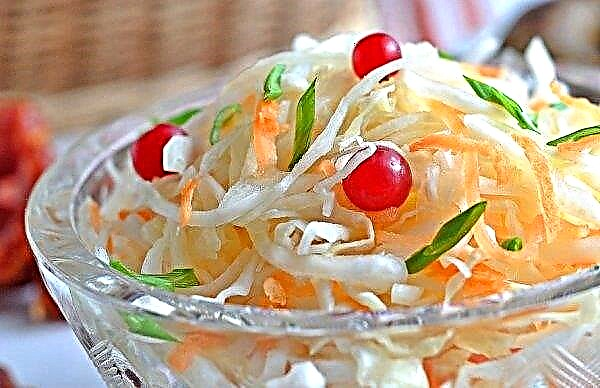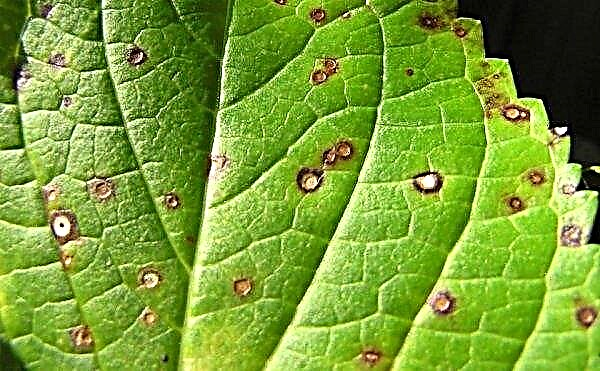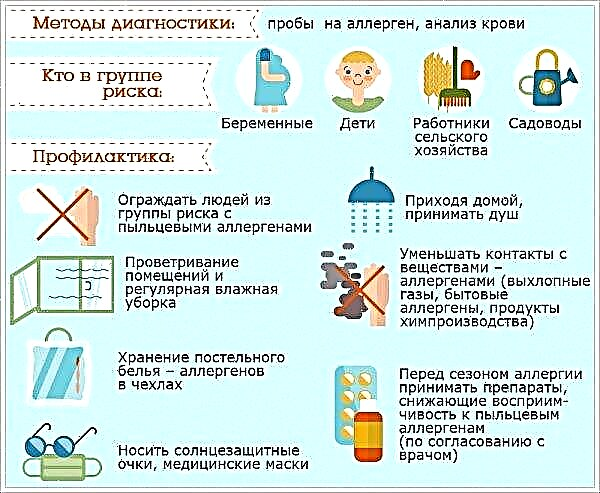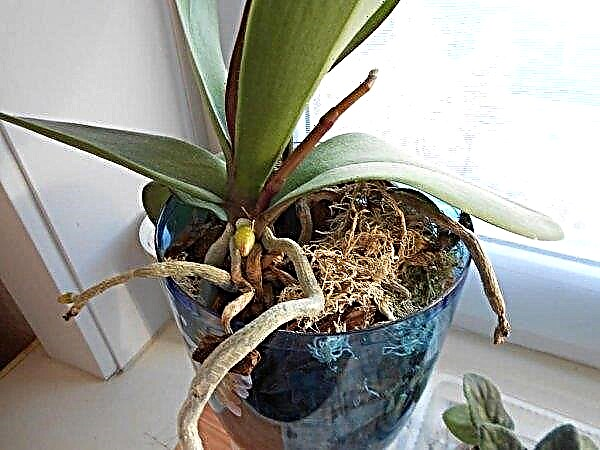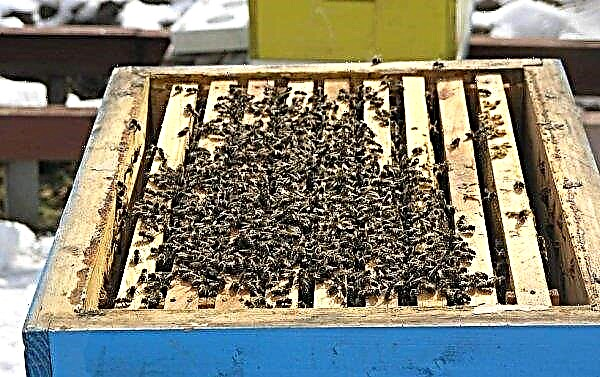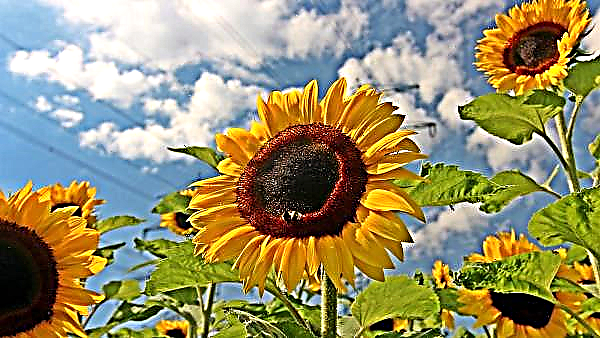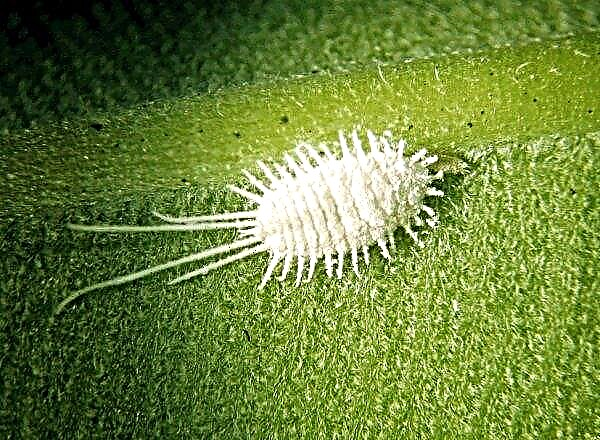Carrots are one of the most common and popular crops. It is part of most first and many second courses, salads and even sweet desserts. Among a wide variety of varieties, Losinoostrovskaya 13 has been especially popular for quite some time.
Description and characteristics of the variety
The carrot variety Losinoostrovskaya 13 has cylindrical root crops, most often of approximately the same diameter along the entire length (about 32–42 mm). The tip has a rounded shape, less often - pointed. The average length of commercial root vegetables is 12.5–16 cm. The average weight is 75–165 g.
On the skin of a delicate structure, small eyes are located, as well as thin lateral root processes. The root crop has a bright orange color as the outer part and the core. The cross-sectional shape of the core can be round or similar to a polyhedron.
The tops are straight, can be slightly stretched to the sides, its height is 35–40 cm. The number of leaves of the outlet is 13 (one version says that this fact became decisive when choosing a name), less often - 11. The outline of the leaf is severely cut, the leaf and petiole is almost the same size. The color of the tops is intense green.
History of creation
The variety was bred at the Federal Research Center for Vegetable Production in the late 50s of the twentieth century, the application for registration was filed in 1960. After 4 years, Losinoostrovskaya 13 was included in the State Register of the Russian Federation.
Important! A nice feature of the variety is the fact that at the base of the root crop, in the place where it merges with the tops, there is no green circle characteristic of most other varieties. The reason is the fact that all the time the growth and development of the root crop is entirely in the ground.
Planting region and ripening dates
According to the State Register of the Russian Federation, the variety is recommended for breeding in the following regions of Russia:
- northwest and central part of the Russian Federation;
- Chernozemye;
- Volga region;
- North of Russia;
- North Caucasus;
- Western Siberia and the Far East.
Variety Productivity
It has excellent yield indicators - 5.4-7.7 kg / m².

Disease resistance
Thanks to the work of breeders, it is immune to most of the diseases typical of Umbrellas. Not susceptible to flowering, adapted to sudden cold snap.
Pros and cons of the variety
- The carrot variety Losinoostrovskaya 13 has a lot of advantages, below we will only talk about the main ones:
- great taste;
- excellent appearance;
- delicate core structure;
- high carotene content;
- resistance to frost and temperature extremes;
- immunity to most diseases affecting Umbrellas;
- good resistance to parasites;
- no tendency to flowering;
- excellent yield indicators;
- universal application.
As for the negative qualities, nothing is known about them. Both large farms and gardeners engaged in the cultivation of varieties exclusively for their own consumption, in their reviews of Losinoostrovskaya do not mention any negative features of this variety.
Among the distinctive qualities of this variety are the following:
- higher carotene content compared to most other carrot varieties;
- the lack of a green ring around the base of the tops;
- excellent keeping quality.
Did you know? Both carrots and beets are, as you know, root crops; when both crops are grown, thinning is carried out. However, there is such an interesting feature - beets pulled out during thinning can be transplanted to another place, and it will grow further. Carrots cannot be transplanted - because of the weak root system, it simply does not take root.
Agriculture cultivating varieties
The variety is not capricious. Hence the simplicity of its cultivation: of all agricultural techniques, it is only necessary to carry out soil cultivation, weeding, weed removal, watering and top dressing.
Optimal growing conditions
Carrots Losinoostrovskaya 13 well tolerates cold and temperature extremes. Seeds can be sown when the soil temperature reaches +5 ... + 6 ° C. The growth and development of a vegetable depends on the temperature of the air and soil.
The emergence of seedlings should be expected approximately on the 26–34th day after sowing at a temperature of +8 ... + 9 ° С, and only in 1–1.5 weeks at + 25 ° С. The root crop begins to actively develop at a temperature of +15 ... + 19 ° С, for the growth of greenery the most optimal temperature is in the range +20 ... + 24 ° С. If the weather is too hot and the earth warms up to + 25 ° C and higher, the development of root crops slows down. Watering should be moderate in volume, but regular.
Video: Carrots varieties Losinoostrovskaya 13
The culture is extremely dependent on the degree of soil moisture, its acidity and the content of minerals in it, especially in the first time after emergence.
The most favorable ratio of the main elements in the substrate is as follows:
- N - 5 parts;
- P - 2;
- K - 8;
- Sa - 6.
The optimal acid-base balance for growing Losinoostrovskaya 13 is pH 6.0–7.0.
Landing time
Due to the fact that the variety is adapted to frost and tolerates sharp changes in temperature, it can be sown both in winter and in spring. In the spring, in late March - early April, the time for sowing comes when the soil warms up to + 5 ° C and above. Among the advantages of winter sowing, one should single out the receipt of an earlier crop.
Choosing the best place and preparing the garden
A place for future beds is being prepared in the fall. When digging, the compost or humus (1 bucket / 1 m²) is added to a not very fertile substrate. If the soil is heavy enough, it is diluted with sawdust, sand or peat.
Compost and peat are added when digging at the rate of 6–8 kg / m². Digging is necessary to the depth of the bayonet of the shovel, it is also better to remove pebbles from the place of future beds. The fact is that, upon encountering an obstacle on the growth path, the root crop branches out in order to overcome it.
The best substrate for carrots is this mixture:
- peat or needles - 20 l;
- sifted river sand - 20 l;
- sifted wood ash - 2 l.
 If the soil in the garden is acidic (pH & lt; 5.5), it should be made more alkaline. For these purposes, when digging, chalk, lime or cement dust is added. In the spring, shortly before sowing, the soil is dug up, leveled and well shed with water heated to +50 ... + 60 ° С. After that, the soil treated in this way is covered with a garden foil. The greenhouse effect will help to warm the soil and prevent it from drying out before sowing.
If the soil in the garden is acidic (pH & lt; 5.5), it should be made more alkaline. For these purposes, when digging, chalk, lime or cement dust is added. In the spring, shortly before sowing, the soil is dug up, leveled and well shed with water heated to +50 ... + 60 ° С. After that, the soil treated in this way is covered with a garden foil. The greenhouse effect will help to warm the soil and prevent it from drying out before sowing.Do not forget about the laws of crop rotation.
After the following crops, carrots grow well:
- Tomatoes
- salad;
- potato;
- bow;
- garlic;
- siderates.
And after these crops, it is better not to sow carrots, as counting on a normal crop will be very problematic:
- any greens;
- parsnip.
In the same place, sowing carrots should not be earlier than in the fourth year.
Preparation and scheme of planting seeds
In order to maximize seed germination, they should be prepared in advance. First you need to remove the remains of essential oils from the seed material.
Do this as follows:
- Pour the seeds into a bag of several layers of gauze or one layer of thin tissue.
- Place the bag with planting material in a basin with warm water (+44 ... + 48 ° С) and rinse several times with high-quality.
- Leave the seeds until the water has cooled to room temperature.
- Transfer the seeds from the bag into a sieve with a small mesh, rinse under running water and lay out to dry on a cloth.
Next, you need to soak the seeds and sprout them. This operation contributes to the early emergence of seedlings, activates vital processes in the seeds. Perform the procedure in this way:
Perform the procedure in this way:
- Take a suitable piece of fabric (preferably linen). The fabric should be so large as to place seeds on one half and cover them with the other half.
- The fabric is moistened in melt water or a solution of a growth stimulant (Epin, Zircon, Ethamon, etc.). You can use a solution of wood ash (3 tbsp. L / 3 l of water) or sodium humate (3 tsp / 3 l of water).
- After soaking, the seed material is rinsed in running water and left for 5-6 hours in a dark, cool place (quenched).
- Seeds are laid out on the same moistened tissue, placed in a wide container with low sides. The container should be covered with a film and put in a warm place. The fabric needs to be moistened periodically, at which time the film is removed so that the seeds gain access to oxygen.
- The seed planting pattern depends on the type of soil. In light sandy soil or in sandy loam, seeds are sprinkled with a 2 cm layer of soil, 1 cm layer is sufficient in clay soils. The distance between seeds is 4.5–5 cm (see below for how to achieve this), and 30–40 cm between rows.
Carrot seeds are dark and very small, which complicates the process of their normal sowing.
To facilitate this task, you can use the following method:
- Make parallel grooves in the ground. The distance between the grooves is 0.3 m, the depth depends on the type of soil - 1-2 cm.
- Cut out strips of 2-3 cm wide from thin paper (napkins, paper towels). Lubricate them with pre-prepared starch paste (1.5 tbsp. Starch per 0.5 l of water).
- On greased strips with tweezers every 5 cm spread the seeds. When the paste is dry, the strips need only be put in the grooves and sprinkled with earth.
In order to make parallel grooves of the same depth for sowing carrots, a simple device will help: take two even planks (thickness - 1-2 cm, length - 1-1.5 m), nail two other planks between them (each length - 0.3-0.4 m). One short bar is 1-2 cm higher than one end of both meter strips (this distance, 1-2 cm, is the future depth of the hole, it depends on the type of soil: 1 cm for loam, 2 cm for sandy loam), the other on your discretion, it is needed for structural rigidity.
They use the device in this way: install it in the soil at both ends (1–2 cm high), and draw parallel grooves. The cross bar serves as a limiter for immersion of such a "plow" in the ground.
Care Features
Measures to care for Losinoostrovskaya are not much different from similar procedures for other varieties. However, there are still some features that are described in more detail below.
Watering
Under normal weather conditions, Losinoostrovskaya should be watered every third day. The irrigation rate is 3 l / m². In the event that precipitation is less than normal, increase the frequency (every other day) and the irrigation volume - 5 l / m².
Fertilizer application
The fertilizers most suitable for culture are mineral fertilizers containing potassium and calcium. It is not necessary to use humus as top dressing, this circumstance may cause branching of root crops, and a decrease in their commercial qualities.
The first time the soil is fertilized 3 weeks before planting. They make preparations containing nitrogen and phosphorus, according to the instructions, after which the future bed should be dug up. Later, after the emergence of seedlings, potassium salt is added in the form of a solution, since a similar form is better perceived by the culture. Potash mixtures containing chlorine cannot be used, this element inhibits the growth of carrots.
After the beds are thinned out for the first time, the following solution should be introduced into the soil:
- superphosphate - 1.5 tbsp. l .;
- potassium chloride - 1.5 tbsp. l .;
- water - 1 bucket.
During the entire vegetative period, fertilizers are applied up to four times. The first procedure for feeding root crops is carried out not less than 20 days after emergence.
Organic fertilizers should not be neglected, it is better to apply them in the fall. However, in the event that a crop that was fertilized with humus previously grew in a place you selected for carrots, you no longer need to add organic matter.Did you know? The world's longest carrot was grown by Briton D. Atherton. Its length was more than 5.8 m.
Thinning
Thinning is an agrotechnical technique, the purpose of which is to remove part of too dense seedlings. Perform the procedure if the seeds were sown very often, close to each other (the distance between adjacent seeds is less than 1.5 cm). If this is not done, developing root crops will weave, deform, and prevent each other from growing.
Beds with carrots are thinned out for the first time after the first sprouts have sprouted. To make the procedure easier, the beds should be watered before that. Following the logic, you need to remove a weaker shoot.
This should be done by pulling out the sprouts vertically, the force should not have a side vector, but directed exactly up. Otherwise, young carrots growing nearby can be injured. As a result of such damage, root crops often form “horns”. Aesthetically, this does not look very good, although it does not affect the taste.
As a result of the first thinning procedure, the strongest shoots should remain on the beds, the distance between which is 3.5–4 cm. These shoots should be poured with water (+30 ... + 35 ° C) at the rate of 3–3.5 l / m² , gently compact the soil between the remaining seedlings, loosen and weed the aisles.
Three weeks later, repeated thinning is performed. By this time, the petioles should grow to 8–10 cm. The purpose of the procedure is to thin out the crops so that a distance of 6–8 cm is formed between adjacent seedlings.
Important! When thinning carrots, a characteristic smell often arises of a root crop that has just been pulled out of the ground. It is an excellent bait for a carrot fly. In order not to attract this pest, the procedure is best performed after sunset or as soon as it rises. In cool air, the smell does not spread so intensely.
Diseases and pests of the variety
Losinoostrovskaya 13 is notable for its developed immunity, but this does not mean at all that no illnesses are terrible at all.
A few words should be said about the diseases that pose the greatest threat:
- Fomoz. The tops are covered with gray spots. In order to prevent the development of the disease, the seed material is subjected to heat treatment (up to +45 ... + 60 ° С) before sowing into the soil. They will help to avoid the occurrence of the disease and fertilizers containing potassium introduced during the growing season.

- White rot. Root crops are covered with a coating similar to cotton wool, under which the mucous substance accumulates. In order to avoid the appearance of rot, it is necessary to irrigate with warm water and the application of organic fertilizers.

- Bacteriosis. The tops turn yellow, brown spots form on the petioles. As a medicine for the fight against this disease, the Hom drug has established itself well.
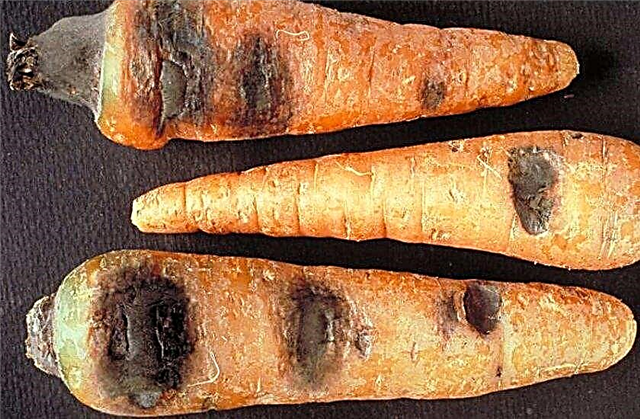
- Rhizoctinosis. Root crops are covered with black dots, gray spots form under the skin. For treatment, copper oxychlorate is used.

Do not bypass carrots and parasites.
More about those that pose the greatest danger to a given crop:
- Carrot fly. A sign of the appearance of the parasite - the tops becomes a bronze hue. The following preventive measures help: a deep digging of the soil, which is immediately treated with ash and tobacco dust before sowing the seeds.
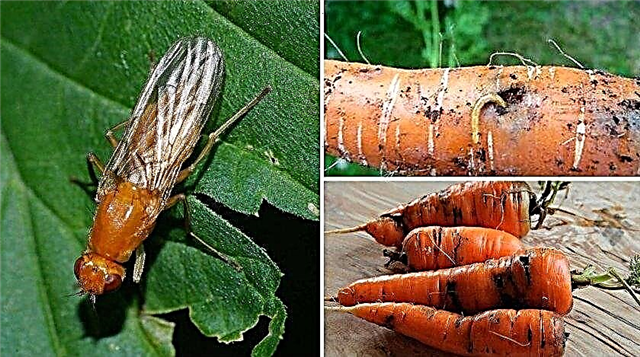
- Medvedka. When this pest appears, the plant has a lot of visible damage - both tops and root crops.As preventive measures, deep autumn plowing is carried out, with the introduction of washing powder, kerosene or pepper infusion into the soil.
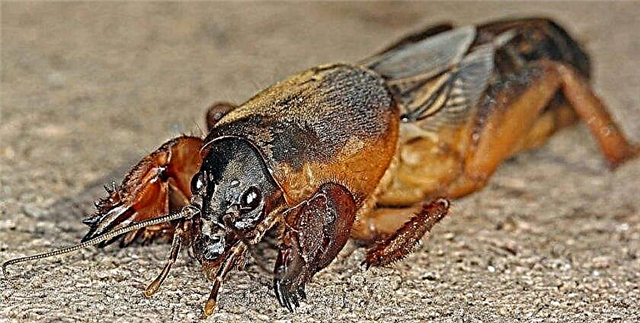
- Leaf Carrot. The larvae of the insect feed on the leaves of the leaves, as a result, the leaves dry, turn yellow and wither. Sprinkling greens with tobacco infusion can scare off the parasite.
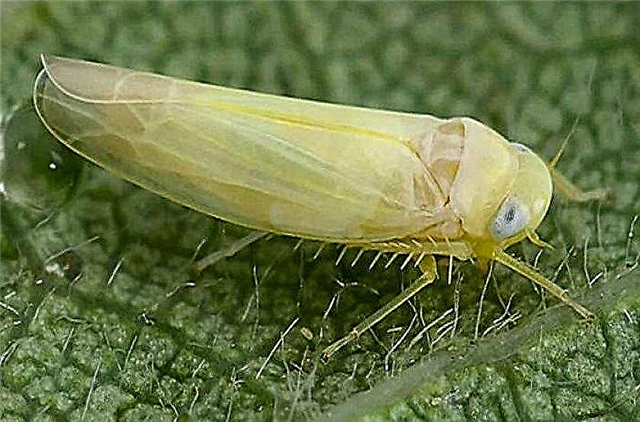
- Wireworm. This pest loves to feast on carrots. To prevent this, use ammonium nitrate as a fertilizer.
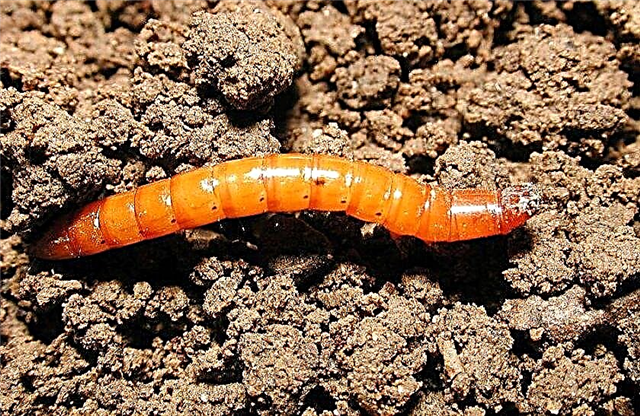
- Winter scoop. These caterpillars devour the greens and the top of the carrots themselves, which is hard to miss. When detecting the signs and the pests themselves, you need to use the following tools: Politron, Decis.

Harvesting and storage
Harvest of spring carrots is collected just before the frost. Winter carrots can be harvested before. As already mentioned, this variety is very versatile, suitable for raw consumption, use in preservation, preparation of mashed potatoes and juices, and you can freeze it.
However, in order to preserve the harvest as long as possible, it is not necessary to process it at all - the excellent characteristics of keeping quality, subject to certain conditions, will help you keep the carrots fresh until the end of spring. These conditions are quite simple: a cellar or a dark room with an air temperature of 0 ...- 1 ° C and a relative humidity of 90–95%.
Did you know? In 1991, the EU recognized carrots as fruit. The reason was the fact that in Portugal they make excellent jam from this culture, and the laws of the united Europe say that jam, jam and jams can be made exclusively from berries and fruits. So, thanks in large part to bureaucratic regulations, carrots have become a fruit.
Due to its universal qualities, high productivity, unpretentiousness in leaving and good keeping quality, carrots of the Losinoostrovskaya 13 variety are suitable both for cultivation at a summer cottage for personal needs, and as the main variety of this crop when grown for commercial purposes by large farms. An important factor is the fact that the variety is adapted to frost, and therefore, you should not be afraid of sudden sudden changes in temperature.
Network user reviews
ADVANTAGES: Excellent germination.
DISADVANTAGES: None.
Great variety of carrots. A win-win crop option. Tasty, juicy, long and well stored. Suitable for all dishes. As salads and all kinds of preservation.











